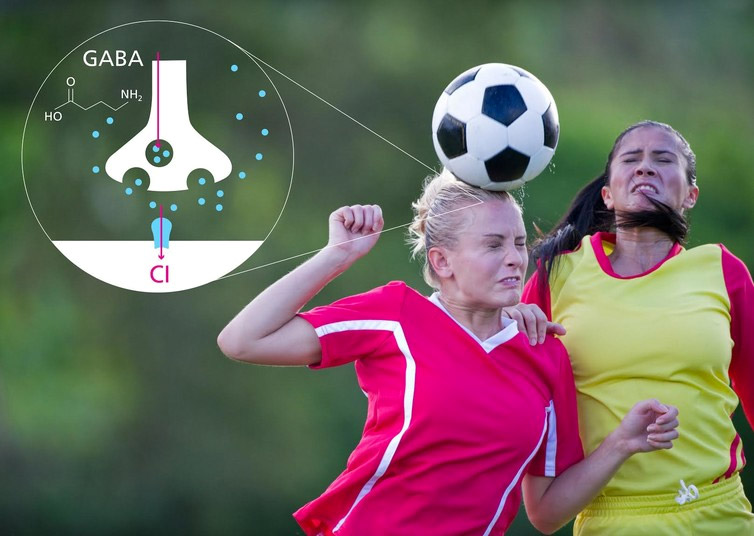Heading a football causes instant changes to the brain
Stirling Brains explored the true impact of heading a football, identifying small but significant changes in brain function immediately after routine heading practice. The study published in EBioMedicine is the first to detect direct changes in the brain after players are exposed to everyday head impacts, as opposed to clinical brain injuries like concussion.
Football players headed a ball 20 times, fired from a machine designed to simulate the pace and power of a corner kick. Before and after the heading sessions, scientists tested players’ brain function and memory.
Increased inhibition in the brain was detected after just a single session of heading. Memory test performance was also reduced by between 41 and 67 per cent, with effects normalising within 24 hours.
Played by more than 250 million people worldwide, the ‘beautiful game’ often involves intentional and repeated bursts of heading a ball. In recent years the possible link between brain injury in sport and increased risk of dementia has focussed attention on whether football heading might lead to long term consequences for brain health.

In light of growing concern about the effects of contact sport on brain health, we wanted to see if our brain reacts instantly to heading a football. Using a drill most amateur and professional teams would be familiar with, we found there was infact increased inhibition in the brain immediately after heading and that performance on memory tests was reduced significantly.
Although the changes were temporary, we believe they are significant to brain health, particularly if they happen over and over again as they do in football heading. With large numbers of people around the world participating in this sport, it is important that they are aware of what is happening inside the brain and the lasting effect this may have.
For the first time, sporting bodies and members of the public can see clear evidence of the risks associated with repetitive impact caused by heading a football.
We hope these findings will open up new approaches for detecting, monitoring and preventing cumulative brain injuries in sport. We need to safeguard the long term health of football players at all levels, as well as individuals involved in other contact sports.
In the study we measured levels of brain function using a basic neuroscience technique called Transcranial Magnetic Stimulation (TMS). The findings from this National Institute of Health Research-funded study are the first to show the TMS technique can be used to detect changes to brain function after small, routine impacts.
Address
University of Stirling
Stirling,
FK9 4LA,
Scotland,
UK+ 44 (0)1786 466857
Latest Tweets
Get In Touch


